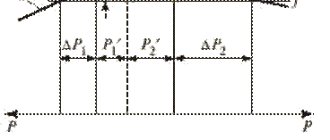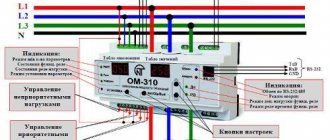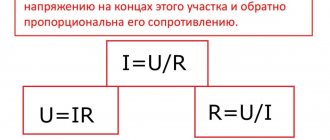Social norm for electricity consumption
First, it’s worth understanding the very essence of the social norm for electricity consumption.
Government Decree No. 614 of 2013 covers this topic in detail. To briefly explain the essence of the issue, we can highlight the following features:
- The law defines the minimum amount of monthly energy consumption. Due to this, the basic needs of the apartment residents are satisfied.
- The price for this volume is slightly lower compared to the parameter in force before the introduction of the norm. If the volume is exceeded, the cost increases.
The state is striving to create an additional incentive to save electricity. And those who increase consumption are forced to pay more, at the same level as representatives of the small commercial sector.
Complexity and confusion are the main problems when implementing an idea.
About current allowances
The supplement is given to citizens who live using electric rather than gas stoves. The same goes for water heaters. The rule applies to Russians living in rural areas. They are entitled to an additional amount of electricity consumption.
The premium is set individually in each region.
Additional volumes will be as follows:
- 3000 kW/hour – for houses heated by electricity.
- According to the standards for one person - in the case of paying for energy supply for dachas.
- 90 kW/hour – rural areas.
- 43 kW/hour – with electric stoves.
What can you do to reduce costs?
The first step is to replace conventional incandescent light bulbs with energy-saving options.
When choosing household appliances, you also need to take a closer look at the class of electrical energy consumption. A or A+++ are the most economical options. It is not recommended to turn on air conditioners with open windows. Then heating and cooling the rooms takes longer. This means that electricity consumption is also higher.
The temperature inside and outside should not differ too much from each other. The best installation location for cooling devices is where the sun's rays and heat practically do not reach them.
If an electric kettle is working, it is better to remove scale from it in a timely manner. Otherwise, the water takes longer to heat up and more resources are consumed.
Calculation of required power
Calculations are made if it is necessary to determine whether the allocated volume is sufficient. The maximum load is calculated as the sum of all devices turned on at the same time. If the registration certificate is lost or the sticker on the equipment is worn out, you should refer to the data in the table.
| Consumers | Power, W |
| Appliances | |
| Electric stove | 1100-6000 |
| Hairdryer | 450-2000 |
| Iron | 600-2000 |
| Heater | 1000-2400 |
| Vacuum cleaner | 400-2000 |
| TV | 100-400 |
| Washing machine | 1000-3000 |
| Fridge | 150-2000 |
| Computer | 400-750 |
| Kettle | 1000-3000 |
| Fan | 750-1700 |
| Tools | |
| Hammer | 600-1400 |
| Drill | 400-800 |
| Circular Saw | 750-1600 |
| Hay mower | 750-2500 |
| Jigsaw | 250-700 |
| Circulating saw | 1800-2100 |
| Sander | 650-2200 |
| Household equipment | |
| Compressor | 750-2800 |
| Water pump | 500-900 |
| Air conditioner | 1000-3000 |
| Fan | 750-1700 |
| A gas boiler | 40-1000 |
| Electric boiler control | 1000 |
Having calculated the amount of consumption, you need to indicate a reserve when the load increases. The devices will consume 20-30% more than the calculated value. The sum of the two indicators is the final result. If the estimated power is lower than declared, you can apply for an additional 1-3 kW.
Social norm for electricity: how it is calculated
To solve the problem use the formula:
S = K x N x T
- T – standard tariff for 1 kW/hour.
- N is the consumption rate for a specific region.
- K is the number of residents registered at this address.
- S – total payment amount.
A different tariff applies to citizens living in private houses. It is especially worth highlighting buildings where metering devices are not installed. In this case, the main factor is the number of people who registered.
Compliance with regulations should not be a problem. But it is necessary to limit the use of equipment with high consumption rates.
Established indicators and factors influencing the value of the standard
Taking into account the conditions for calculating standards, it is more profitable for the consumer to pay for the electricity used according to the readings of the installed meter. In this case, payment is made for the resources actually used, without overpayment, taking into account the increasing coefficients included in the calculation methodology.
However, the installation of electricity meters is not possible for all consumers due to the lack of technical capabilities due to the deterioration of fixed assets in residential buildings and the unsatisfactory condition of networks. Sometimes consumers do not want to voluntarily install individual meters.
In this situation, payment is made according to calculated standards, depending on the following factors:
- residential and non-residential area of the apartment;
- the number of people registered in the living space;
- housing accessories to apartment or private buildings;
- using an electric oven for cooking;
- heating method;
- finding housing in a city or rural area.
These standards were calculated empirically on the basis of actually measured indicators for groups of consumers divided into categories for the country as a whole. Regional authorities are given the right to adjust standards in accordance with local conditions that affect the cost of supplying energy resources. However, the deviation upward from federal standards should not exceed 40%.
The maximum monthly norms per person approved in the regions, depending on the use of a gas or electric stove, respectively, are (in kWh):
- for single citizens living in a one-room apartment - from 81 to 185 or from 108 to 263;
- families living in similar conditions - from 28 to 63 or from 37 to 89.
The norms are calculated taking into account the following additional circumstances:
- for residents of rural areas, the indicators are assigned higher by 90 kWh, due to the need to use energy resources in household farming;
- single pensioners, in the absence of an electric meter, which is not installed for valid reasons beyond the control of the consumer, pay for electricity according to the social standard established by the minimum consumption limit;
- For a dacha household with a centralized power supply without an installed individual metering device, the fee is set according to the standards per person.
More details about the value of the established standards are set out in the resolutions of local authorities.
With missing devices
Here they rely only on current consumption standards for 1 person. Since 2015, increasing coefficients have been introduced. Especially in situations where there is a technical opportunity to install meters, but they decided not to use it. The presence of such a possibility also affects the application of tariffs.
In this case, the consumer must submit a special report confirming the absence or presence of technical restrictions for installing the device.
Utility service providers issue a separate warning that if errors are not corrected, certain increase factors will apply. The right to apply coefficients appears if a warning is issued, but within two months the other party has not taken any action to eliminate the problem.
How is the electricity utility consumption standard regulated?
The standard for electricity consumption is set separately for each region of the Russian Federation. This figure is regulated by local governments. Legislative framework for consumption standards:
- Federal Law No. 190 “On Heat Supply”.
- Federal Law No. 614 “On the procedure for establishing and applying social norms for electricity consumption.”
- Federal Law No. 261 “On Electricity Supply”.
- Order of the Government of the Russian Federation No. 1650-r.
It is on these legislative acts that all other documents on standards that are adopted in the constituent entities of the Russian Federation are based. There is only one important rule: the standard established by the region cannot differ from the federal standard by more than 40%.
It is more profitable for the authorities for the population to install metering devices, and therefore for those who are calculated according to the standards, an increasing coefficient has been established. In most cases, paying for light according to the standards becomes unprofitable.
Features of recalculations
Recalculation of fees in connection with social norms is an issue that deserves separate consideration. When such rules are applied, some categories of citizens gain access to additional benefits. This usually applies to pensioners, large families, and so on. The following rules are introduced for them:
- For the first year, the entire amount of energy consumed is paid within the current norm.
- In the future, the fee increases by 1.5 times.
The consumer can submit a written application himself if there is a right to a benefit, but until now it has not been possible to use it. The recount must be carried out no later than 10 days after receipt of all documents.
Recalculation is also carried out if the category of consumer changes for one reason or another.
The same rules apply to households, regardless of category. But it is important to pay attention to registering citizens or deregistering them at a particular address.
Consumers are required to notify utility providers of changes in the composition of such households. Otherwise, the use of the benefit is considered illegal if there are no grounds for it. Recalculations are carried out for no more than three previous months.
Registration authorities also transmit information related to the number of residents. Performers carry out recalculation if certain information turns out to be unfounded. The period is standard - no more than the previous three months.
Electricity consumption restrictions for individuals
In some situations, power supply companies can legally cut off electricity to residential properties.
Limitation of electricity consumption for individuals may occur in the following situations:
- Formation of debt amounting to more than 2 months.
- Requirement of bailiffs.
- Further use of indoor equipment is unsafe for human life and health.
- An object connected under a temporary scheme has expired its technological connection period or grounds have arisen for early termination of the contract.
In this case, the supplier must notify the consumer about the introduction of restrictive measures in one or more ways:
- Message to phone.
- Call the consumer personally at the specified contacts.
- On the payment receipt.
- Letter by email.
- Publication in a periodical publication where legislative and regulatory acts are published.
Therefore, if the consumer says that he did not receive notifications, this does not mean that the supplier company is acting illegally.
Settlements with RSO
Separate accounting of the energy supplied to each of the operating households is carried out. Such volumes are indicated separately when purchasing resources. The parties are obliged to exchange any information provided for in current legislation. The main thing is that the price of resources is calculated taking into account current tariffs.
Video about how much electricity household appliances consume:
See also Phone numbers for consultation Oct 25, 2022 Victoria M. 1026
Share this post
Discussion: there is 1 comment
- Valentina says:
01/11/2020 at 20:59Mom is a labor veteran, and she is provided with electricity benefits exactly from the norm, that is, they pay compensation from the amount that she would have paid according to the norm, but she pays less than the norm according to the meter. This results in good savings, so the standards are already being applied in some cases. Regarding the fact that expenses above the norm are paid at a more expensive rate, I think it is correct. We need to save, and maybe in this way people will become more thrifty.
Answer
Tariff gradation
In order for owners of luxury residential properties to pay for the service at increased rates above the social consumption norm, it is planned to introduce a stepped tariff system, which consists of three levels:
| Basic tariff | from 300 kWh |
| Increased tariff | from 300 to 500 kWh |
| High tariff | over 500 kWh |
It turns out that within the norm, kilowatts are cheaper, and above the norm, they are more expensive. The methodology for determining tariffs is approved by the Federal Tariff Service of the Russian Federation.
Differentiated tariffs by day zones
Electricity consumption in the Nizhny Novgorod, Rostov, and Vladimir regions showed that social the electricity rate can be combined with two-zone and three-zone tariffs with a more fractional grid (day/night and peak/half-peak/night).
Since the redistribution of load on power grids is an important point in the social norm of consumption, differentiated tariffs will not be abolished in 2022.
It is planned to remove some benefits for paying for electricity. So, they are gradually canceling:
- reduced tariffs for rural areas;
- preferential prices for residential properties with electric stoves;
- tariffs for gardening associations, which are equal to prices for citizens.
Instead of preferential tariffs, subsidies are being introduced for beneficiaries in the form of additional payments to benefits . Differentiation will remain depending on the number and composition of residents (benefits for people with disabilities, large families) within the framework of a stepwise payment gradation system.










